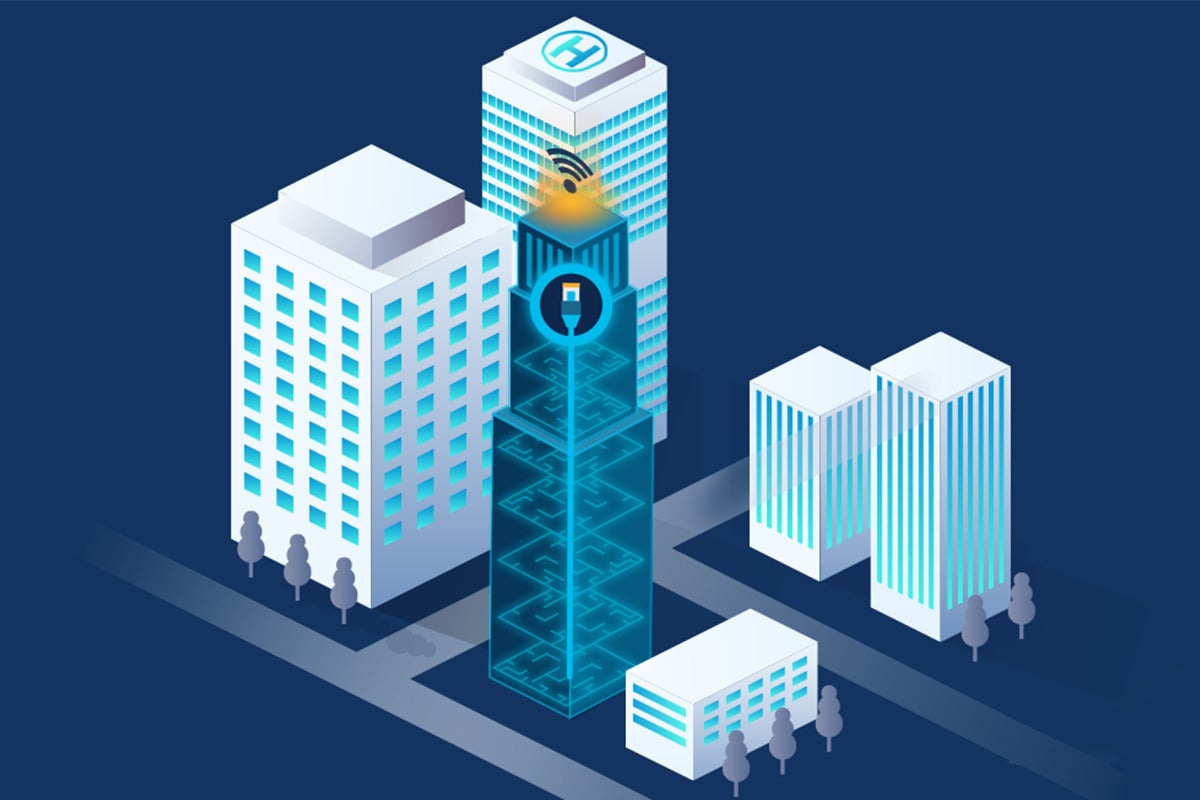Cisco adds to its Catalyst software stack for back-to-work safety

Cisco has taken the wraps off a technology package it says will utilize existing core wireless and wired systems to help enterprises better control their physical environments and enable a safer, more secure return to the office.
While supporting remote offices and branches of one—IDC says that post-COVID, more than 52% of workers will either remain remote or hybrid—they rest could return to an altered business space.
In these offices, sensors and devices that have been used to manage lighting and HVAC systems can be adapted to occupancy and density monitoring, air-quality testing, contact tracing, and in-room presence, according to Anoop Vetteth, vice president of product management with Cisco’s Enterprise Switching and Software Solutions group.
Smart-building technology is still being used to save energy, but the data it generates can also support a converged, interconnected information technology/operational technology network that can be used to bring workers back into the office in a safe, socially distanced environment, he said.
Cisco will help by adding support for its geolocation software, DNA Spaces, to its Catalyst 9000 family of branch and campus switches.
DNA Spaces is a cloud-based offering comprised of Cisco’s Connected Mobile Experience (CMX) wireless suite and enterprise geolocation technology purchased from July Systems in 2018. CMX is a software engine that uses location and other intelligence gleaned from Cisco wireless infrastructure to generate analytics data and help deliver services to customers on their mobile devices. The software also includes an IoT Gateway service that lets customers manage a variety of IoT devices, form factors, and communications protocols.
DNA Spaces includes analytics support that details who and what is in physical locations along with the ability to act on those insights in real-time, Cisco said.
DNA Spaces can show not just which spaces—like department stores, waiting rooms, cafeterias—are being used and when, but also where people come from to get there, how long they stay, what data resources they use, and where they go after they leave.
Until now, the system was for mobile environments, but Cisco is bringing it to the wired Catalyst-switch world for what it expects will be a variety of new applications.
“With the widespread use and power of Cat 9000 switches and access points we provide a cloud-delivered service that can interpret and normalize telemetry from various endpoints in a smart-building ecosystem, feed the information to DNA Spaces, let customers easily integrate and control thousands of different devices,” Vetteth said. “Customers can build new applications around hot-desking, hoteling, air quality, health and safety, and occupancy management using that data and management data integrated from third-party systems as well.”
Cisco DNA Spaces can integrate data from a wide variety of third party systems including IBM, Molex, Superior Essex Communications, Somfy, and others.
Since integrating IoT devices with the business network can be a security nightmare, DNA Spaces can be paired with Cisco’s DNA Center to microsegment and control access from those devices.
DNA Center is the core of Cisco’s intent-based-networking initiative and is the core-networking control platform that features myriad services from analytics, network management and automation capabilities to assurance setting, fabric provisioning, and policy-based segmentation for enterprise networks.
“Using the smarts of the Cat 9K and DNA Center, customers can classify all endpoints and use analytics and other tools to block access to applications and resources by statically defining boundaries and enforcing them,” Vetteth said.
In addition, network assurance delivered by Cisco DNA Center has the unique capability to monitor the health of connected power-over-Ethernet (POE) devices and other wired and wireless devices throughout a building. This gives the OT-ops team the tools for optimal energy planning and proactive troubleshooting to keep employees productive and safe, Vetteth wrote in a blog outlining the announcement.
Extending DNA Spaces and its IoT Gateway into Catalyst 9000 products will bring location and asset tracking to a much wider set of Cisco customers and open the door for interesting future use cases, said Brandon Butler, a senior research analyst with IDC.
“In the post-COVID era these tools have a variety of new use cases such as alerting when capacity limits are reached in certain areas and monitoring which spaces have been used and how frequently,” Butler said.
“Another emerging use case of this technology is enabling the convergence of IT and OT management. OT environments in many cases are quite different from IT environments, but organizations can realize significant benefits from having common usage/access, monitoring/visibility, and security/analytics policies across IT and OT,” Butler said. “DNA Spaces, along with the integrated IoT gateway, can help to bridge that gap. Extending DNA Spaces to Cisco’s Catalyst switches and APs should encourage customers who have not explored this technology to consider how it may benefit their future of work, IoT and smart-building initiatives,” Butler said.
Software components for this offering will be available with DNA Advantage and Premier licenses this month.
READ MORE HERE



